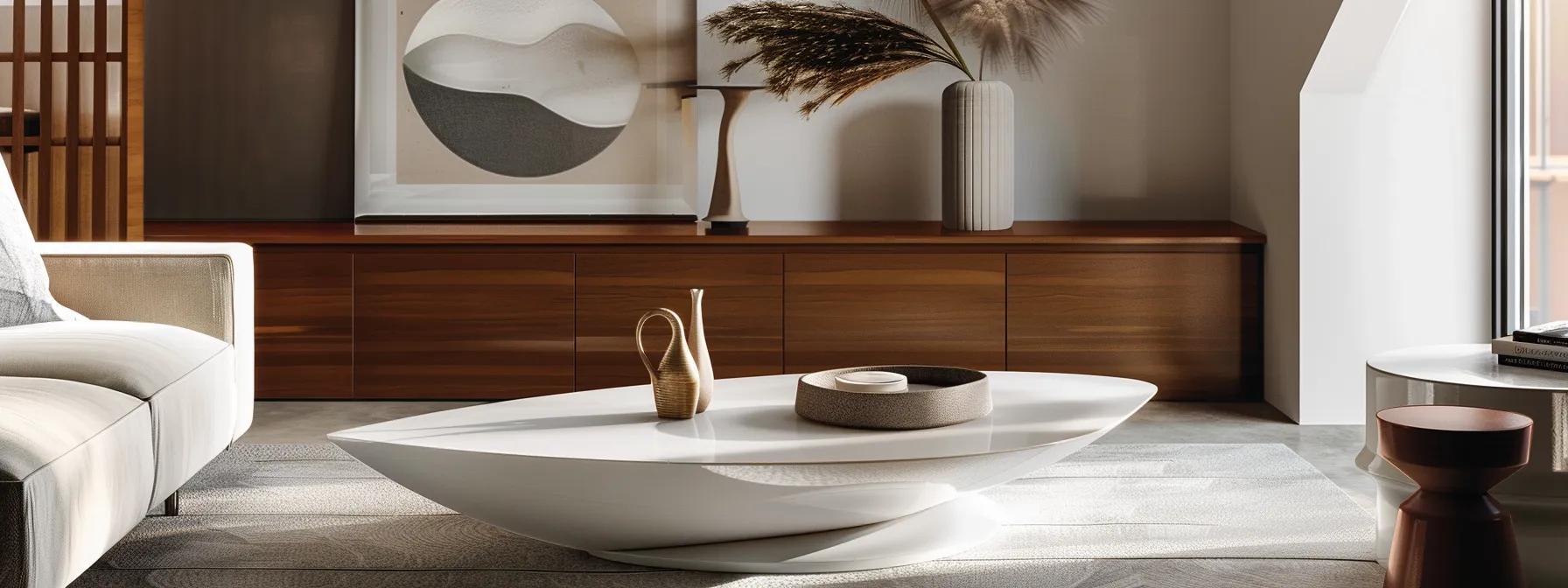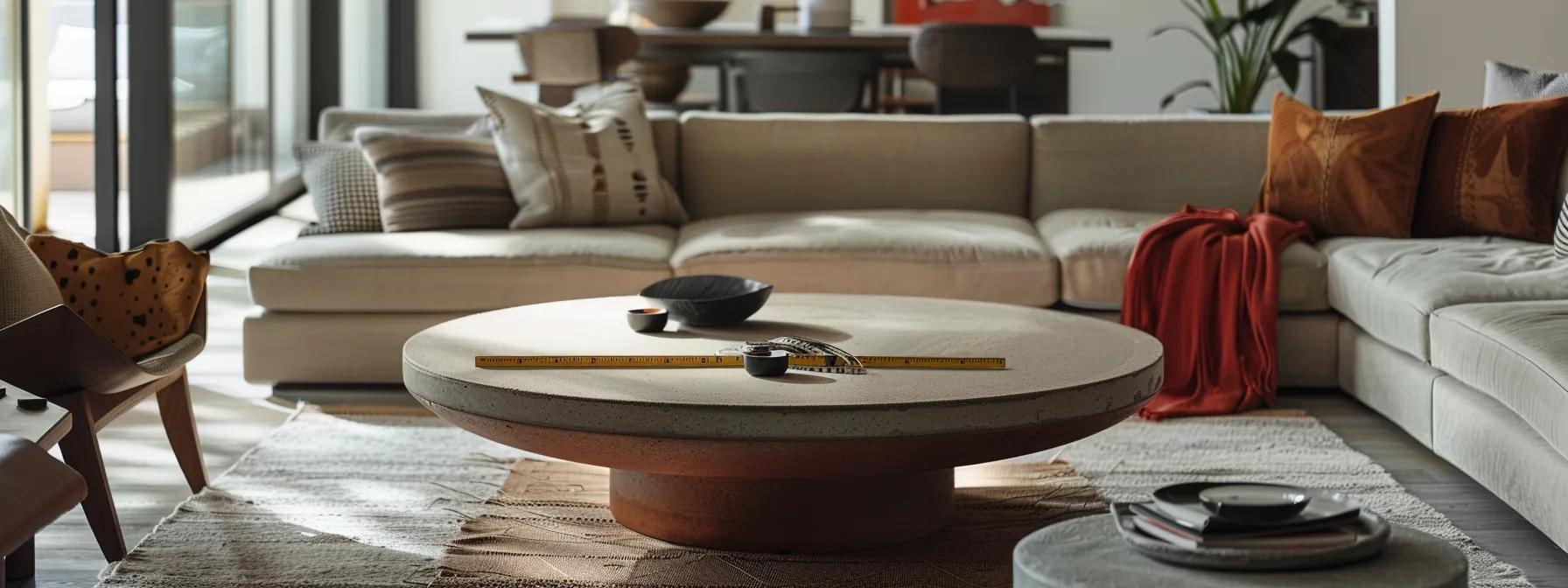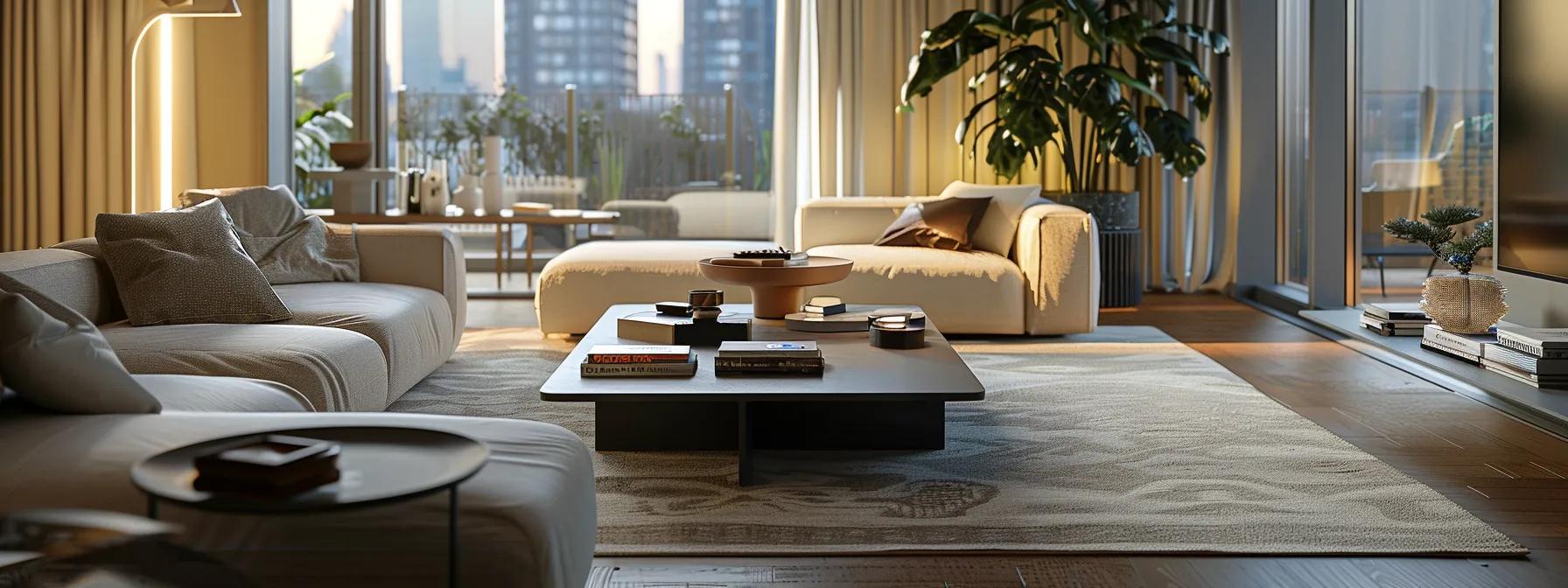
How Tall Should Your Coffee Table Be? How to Choose the Right Size Every Time
Choosing the perfect coffee table height is crucial for both functionality and style. An ideal coffee table provides comfort, ease of use, and visual balance with your seating. This article explains how to measure your sofa and room, consider typical height ranges, and select a table that meets both design and practical needs.
Understanding the Fundamentals of Ideal Coffee Table Height
The ideal coffee table height is primarily determined by your sofa’s seat height. A table that is too high or too low disrupts conversation, comfort, and overall aesthetics. In this section, we explore the key guidelines and provide insight into why proper height matters for both ergonomics and room design.
The Standard Guideline for Coffee Table Proportions
A simple rule is that the coffee table should be roughly the same height as the sofa cushions. Typically, a difference of 2–4 inches between the sofa seat and the table is advised. For example, if your sofa seat is 18 inches high, a table ranging from 16 to 20 inches works best, ensuring ease of access without strain.
Why an Appropriate Coffee Table Height Affects Comfort
When the table is in proportion with your seating, it enhances ease of use, whether retrieving items or engaging in conversation. A table that is too low requires excessive leaning, while one that is too high can block the view and disrupt the room’s flow. The correct height improves comfort for dining, working, or relaxing.
How Your Sofa’s Seat Height Sets the Standard
Measuring from the floor to the top of your sofa cushion—usually between 16 and 20 inches—provides a guide for selecting a table. Matching or staying close to this measurement creates a seamless look and ensures that everyday activities around the table are convenient.
Considering Armrest Height for Visual Cohesion
While the seat height is vital, the height of your sofa’s arms also affects the table’s appearance. High armrests can make a table seem lower, so it is important to choose a table height that complements both the seat and the arms, ensuring a balanced overall look.
Identifying Your Primary Coffee Table Uses
Your table’s height may vary based on its functions. A table used mainly for display or light storage might have different requirements compared to one that serves as a workspace or dining area. Consider your routine activities to determine if you need a standard height or a slightly modified dimension.
Key Measurements for Choosing the Right Coffee Table

Accurate measurements are essential to ensure that the coffee table fits both the space and the furniture. This section covers how to take proper measurements and consider the overall scale of your room when selecting a table.
Accurately Measuring Your Sofa for Coffee Table Selection
Begin by noting the height of your sofa’s seat from the floor to the top cushion. Also, measure the depth and width of your seating area. These dimensions help determine the table’s appropriate size and prevent it from overwhelming your space.
Ensuring Sufficient Clearance Around Your Coffee Table
Leave at least 18 to 24 inches of clear space around the coffee table. Adequate clearance not only improves accessibility but also allows free movement and prevents the table from obstructing other furniture.
Assessing the Overall Scale of Your Living Space
Consider the room’s overall size, ceiling height, and adjacent furnishings. A table that fits the scale of your room contributes to a balanced atmosphere, ensuring it neither appears oversized in a small room nor dwarfed in a large area.
Typical Coffee Table Height Ranges for Reference
Most coffee tables fall within a height range of 16 to 20 inches, aligning with average sofa seat heights. Although modern designs may vary for functional or decorative reasons, this range offers a solid starting point for most selections.
Documenting Dimensions for an Informed Decision
Keep a record of your measurements, including sofa seat and armrest heights, and available clearance. This documentation can simplify discussions with retailers or custom makers and prevent last-minute surprises.
Matching Coffee Table Height to Your Specific Seating
Different seating arrangements can call for customized table heights. Below are guidelines that help align table dimensions with various sofa types.
Selecting an Ideal Coffee Table Height for Low Sofas
For sofas where the seat height is below 16 inches, choose a table with a lower profile—around 14 to 16 inches. This adjustment ensures that the table remains easily reachable and maintains a consistent visual flow.
Determining the Correct Height for High-Seated Couches
If your sofa features seating above 20 inches, opt for a taller coffee table, typically between 20 and 24 inches. The increased height keeps the table visually proportional and aids ergonomic functionality.
Coffee Table Height Solutions for Sectional Arrangements
Sectional sofas can have varied seat heights. In these cases, either identify the dominant seating area or select an adjustable or multi-tier table that caters to different segments, ensuring that every seating area interacts comfortably with the table.
Coordinating Coffee Tables With Armchairs and Other Seats
When using the coffee table alongside other seating like armchairs, it is important to select a height that averages the different seat heights. This approach maintains visual cohesion and usability across the entire seating arrangement.
Creating a Unified Look With Different Seating Heights
In rooms with mixed seating, aim for a table height that balances between the lowest and highest seats. Adjustable tables can provide flexibility, ensuring a unified, harmonious appearance.
Considering Functionality When Determining Coffee Table Height

Functionality is as critical as aesthetics when determining the right table height. This section explains how different daily activities can influence the ideal coffee table dimensions.
Choosing a Height Suitable for Eating or Working
If you plan to use the coffee table for dining or working, a slightly higher table—close to the upper end of the standard range—may be necessary to comfortably accommodate laptops, books, or meals without restricting legroom.
Selecting a Table Height for Convenient Reach and Use
A well-chosen height allows you to easily retrieve items like drinks or magazines without much effort. The table should be at a comfortable distance, reducing unnecessary stretching and promoting a clutter-free environment.
The Impact of Height on Coffee Tables With Built-in Storage
For tables that include drawers or shelves, the height should address both the functional accessibility of the storage and the overall ergonomic flow. A balanced height ensures items remain easy to access while seamlessly blending with the room’s design.
Evaluating Multi-Tier Coffee Tables for Adaptable Use
Multi-tier tables offer various surfaces at different heights, making them an attractive option for households with diverse needs. By aligning each tier with appropriate seating levels, these designs enhance functionality and design versatility.
How Your Daily Activities Influence Your Coffee Table Height Needs
Reflect on how you use your living space—whether for reading, entertaining, or casual snacking—to determine the most practical table height. A table that complements your lifestyle can significantly improve comfort and overall room aesthetics.
Achieving Visual Harmony With Your Coffee Table Selection
A coffee table is not just a functional piece; it plays a major role in the overall décor. Here, we address how material, style, and coordination with other furnishings contribute to visual harmony.
Creating a Balanced Look With Coffee Table Dimensions
The table’s size should enhance the room’s overall balance. A table that fits well within the space will accentuate the design of both the furniture and the room without causing visual imbalance.
How Coffee Table Material and Style Affect Perceived Height
Different materials and styles can alter the visual impression of a table’s height. For example, a glass table might seem lower than a solid wood one. Matching the table’s material with the room’s design reinforces a cohesive look.
Harmonising Coffee Table Height With Other Room Furnishings
Ensure that the coffee table’s height aligns with other key pieces such as side tables and TV stands. This consistency creates a smooth transition between different elements in your room and enhances overall functionality.
Using Table Height to Establish a Focal Point or Maintain Subtlety
Depending on your design goals, your coffee table can either serve as a focal point or blend into the background. An eye-catching design paired with a well-chosen height can make the table a centerpiece; alternatively, a more subtle table will complement surrounding furniture for a harmonious look.
Principles for a Visually Appealing Furniture Layout
Balance, consistency, and careful measurement are key. A table that interacts well with surrounding furniture and adheres to the room’s scale contributes to a smooth, visually engaging layout.
Common Errors in Coffee Table Height Selection and Their Solutions

Avoid these common pitfalls when choosing a coffee table to ensure both aesthetics and functionality are maintained.
Ignoring the Critical Sofa Height Connection
Failing to match the table with the sofa’s height can lead to awkward proportions and discomfort. Always measure your sofa first and select a table within a 2–4 inch range.
Forgetting to Allow Adequate Space for Traffic Flow
A table placed too close to other furniture can disrupt the room’s flow. Ensure there is sufficient clearance—ideally 18 to 24 inches—around the table.
Picking a Table That Is Too Tall for Comfortable Use
A table that is overly tall makes it difficult to reach items comfortably. Stick closely to the sofa’s seat height guidelines to avoid this issue.
Opting for a Table That Is Too Low for Practical Access
Conversely, a table that is too low can force you to lean forward, causing discomfort. Maintaining a small margin above or below the sofa’s height is key.
Failing to Visualise or Test Heights Before Purchase
Always test the table height in your space if possible. Using tape or cardboard cut-outs can help you visualize the table’s fit and ensure it meets your practical needs.
Frequently Asked Questions
Q: How do I determine the right coffee table height for my sofa? A: Measure your sofa’s seat from the floor to the cushion and choose a table within 2–4 inches of that height.
Q: What if my living room has mixed seating styles? A: Aim for an average height or consider custom or adjustable tables to balance the differences.
Q: Can coffee table height affect how spacious my room feels? A: Yes, a well-scaled table improves circulation and visual balance, creating a more open feel.
Q: Are there coffee tables designed specifically for built-in storage? A: Absolutely. Many tables integrate drawers or shelves, and the chosen height balances storage accessibility with overall design.
Q: How can I test a coffee table’s height before purchasing? A: Use tape or cardboard cut-outs at the proposed height to visualize and assess comfort and ease of movement.
Final Thoughts
Choosing the right coffee table height requires balancing functionality with aesthetics. By measuring your sofa, planning for clearance, and considering your everyday activities, you can select a table that enhances comfort and creates a harmonious room layout. Take the time to test and visualize your choice to ensure it complements your entire living space.
